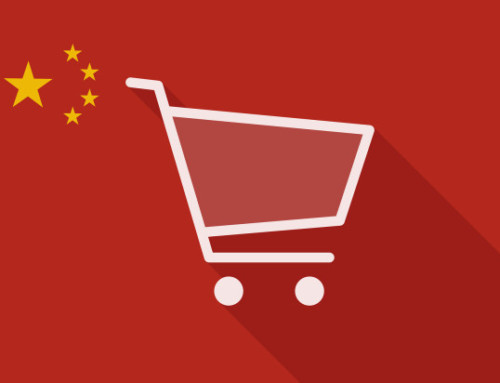China has become the leading emerging market for many Western brands and retailers. For many businesses, the growing spending power of high-income consumers and the middle class in China has become a compelling growth engine. For luxury brands, China is already a huge growth market. As the economy grows in China and consumer thirst for foreign brands increases, companies will be compelled to consider an online direct-to-consumer presence due in-part to the following factors:
The scope of the Chinese market is immense. China Ecommerce presents an important way to reach consumers across the entire country while complementing any decision to invest in core physical retail operations. China Ecommerce is growing very quickly. In 2015, online spending in China grows to $2.43 trillion.
The Chinese consumers’ strong appetite for foreign brands. One of the key reasons why Chinese consumers prefer foreign brands is actually quality. And while Chinese products will likely improve in quality over time, there is a sense that Western brands must have a sense of urgency and move now to win the hearts and minds of Chinese consumers.

Based on the above reasons, starting your China ecommerce allows no delay. Jingle Office has summarized the ways to help you start your China ecommerce.
#1 Market Research
Before starting an China ecommerce business, you must check if your brand name has been trademarked, as this could radically affect your plans. One must also be aware of the competition present in the market that you are targeting. Look to see who is “winning the game” in your sector right now. Your competitors may have the market sewn up and it becomes a battle for market share. There are other barriers to overcome too, such as paperwork and licenses, including ones for imported goods, which need to be completed before you can do business in China. Most importantly, you must segment the market, target a certain client base with similar characteristics and then position your brand to tie in with the targeted customer base.
#2 Choose Your Store
You have two choices to start your ecommerce in China: your own stand-alone ecommerce presence, or online shop on popular ecommerce platforms.
1. A stand-alone ecommerce website
A stand-alone ecommerce presence allows better control for online-to-offline strategies, new product inventories (vs new products to be approved by the marketplace, which can be a lengthy process) and design flexibility. However, launching a stand alone ecommerce is not without its challenges in China.
Payment gateways: Chinese use different payment methods from foreigners. The preference of Alipay or WeChat Pay over PayPal in China is due to the number of free functions offered to account holders, such as buying bus tickets, topping up mobile credit and paying for products in-store, to name a few.
Hosting and loading speed: Depending on your target market, businesses need to be selective which web host is best for you. Hosting a European based website while your target market is in China will cause access issues, ranging from lengthy loading time to ultimately poor user experience.
ICP: Obtaining an ICP license is mandatory if you want to operate a website in China. Your ecommerce website will be shut down by Chinese government without this license.
2. An online shop on popular ecommerce platforms
There are many ecommerce platforms in China. Tmall and JD (JingDong) are China’s most popular B2C platforms. Both are comprehensive platforms. There are some documents, including your business license and some certifications, required when you register a shop on the platforms.
WeChat is an extra channel given the fact there are over 697 Million active WeChat users in China. Social media play a significant role in Chinese ecommerce, which already makes up 40 percent of the total Chinese e-commerce turnover.
And there are other ecommerce platforms in China, for example, JUMEI, VIP, Suning, etc. According to your product or service, you can choose one or more platforms. If you are in the cosmetic line, JUMEI is a good choice. If you are in the fashion line, you can choose VIP to start. It is common for foreign companies to choose more platforms. Blackmores, an Australia company, establishes its cooperative relationships with several ecommerce platforms.
When you choose your ecommerce platform, it is better to assess it. Get detailed information about its target customers, focus categories, logistics, how long it has been running, other cooperative foreign brands, and so on.
#3 Write a Business Plan
For any company, no matter it is foreign or domestic, large or small, the importance of a business plan is undoubtedly great. You have to set up your ecommerce business plan as clear and specific as possible. It should cover your ecommerce model, sales goal, revenues goal, marketing strategy, marketing budget, pricing strategy, promotion campaign, and so on. It is a really important because the layout and infrastructure of an ecommerce site will be the difference between customers buying your product/service and browsing elsewhere. It’s no use rushing your website as it will only hinder you in the long run.
#4 Find a Partner
It will be much easier to enter China if you find a right partner to cooperate. Local native-speaking implementation partners are familiar with all cultural, technical, legal, political and governmental issues. They can help you to work out the political and legal issue (e.g. Chinese business license) at the early stage when you plan to enter Chinese market, and can offer you the most effective solutions for product localization and other problems.
There are several ways of finding partners in China. It pays to take your time to select a partner right for you.
#5 Product Localization
Localization is perhaps where most foreign companies lose out in China. Localizing in China can even mean discarding a business practice model that has been successful in other Asian countries like Singapore and Japan. Top executives from home-base are not going to win a local fight.
Don’t try to force your foreign product or message onto the Chinese market. Customize your brand face – your packaging and your website – and do it with your competition in mind. Some foreign companies failed in China because they jumped the gun – launching before their China face is ready.
When localizing your website, you need to find the balance between your company culture and local culture. Pay attention to user interface design and user experience design. Another point on website localization is the quality of translation. Some try to cheat on the translation, using services like Google Translate. That’s really silly, as Google doesn’t work well in China and the translation is very poor. Quality translation is essential.
And don’t forget to localize your payment method. The financial industry is protected by Chinese government. Most Chinese customers only have domestic bank account and third part payment account. Alipay occupies half of the market so far. Pay by delivery is also acceptable, which is still widely used in Chinese ecommerce.
#6 Website Promotion
For foreign companies launching their ecommerce business in China, website promotion is important for them to strengthen their brand awareness and stand out from the competition, especially for the brands that Chinese are unfamiliar with.
First, carefully design your website, no matter you are a stand-alone ecommerce website or a shop on ecommerce platforms. Offer friendly user interface design and user experience design. The information displayed on the website should be as clear and detailed as possible in order to make Chinese customers understand product functions, usages and appearances. It is better to show some pictures of both product and package. Feedback and reviews are also important. For some customers who are not sure whether to buy, reviews from other customers become a crucial factor. So encourage customers to make feedback and reviews on your product. All of these mentioned above can drive your website clicks and orders.
Besides, search engine optimization is always important. As in all markets nowadays, you need to run campaigns and search engine marketing to drive traffic to your website. The search giant in China is Baidu rather than Google. You have to remember that search in Chinese is different from search in English. Besides that, you can also choose an affiliate service, such as Alimama; Baidu PPC; and social media marketing (for example, Weibo and WeChat).
For Western retailers, you could consider integrating with a local Content Delivery Network (CDN) such as China Cache or gaining a thorough understanding of local caching rules. Knowing when and how to distribute content across a CDN is also critical.
Finally, for Chinese customers, tablets and phone are playing an increasingly important role in online shopping. Nearly half of all China’s ecommerce sales, totaling $505.7 billion, are made with mobile devices. If you aren’t building ecommerce businesses with mobile in mind, you may be irrelevant in three to five years.
The cost of gaining eyeballs for your product and website is high, but indispensable. So make it in your business plan, and make sure your company has the financial capacity needed to go through the Chinese marketing development period until your product gains sales momentum.
Related reading: 8 Effective China Digital Marketing Strategies












